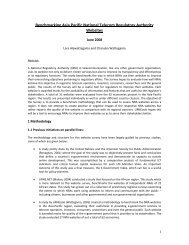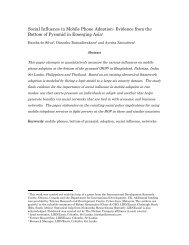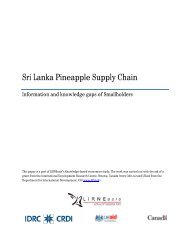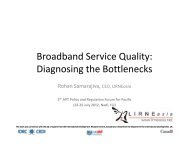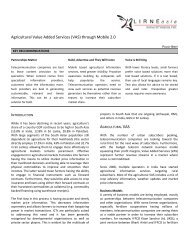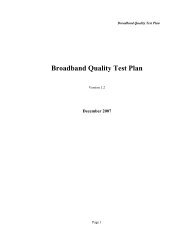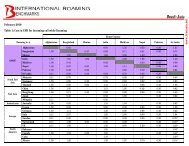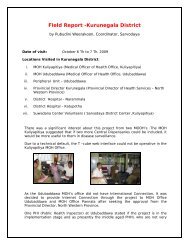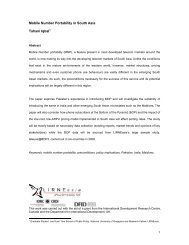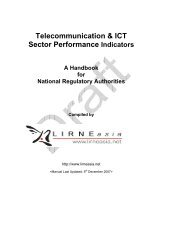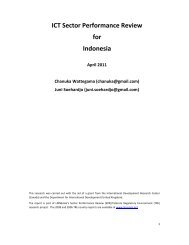Teleuse@BOP3: A Qualitative Study - LIRNEasia
Teleuse@BOP3: A Qualitative Study - LIRNEasia
Teleuse@BOP3: A Qualitative Study - LIRNEasia
Create successful ePaper yourself
Turn your PDF publications into a flip-book with our unique Google optimized e-Paper software.
Home Visit and Media Mapping Exercises<br />
Home visits and media mapping exercises were conducted with migrant workers as well as migrant worker families<br />
in all the countries according to the sample specific for each research location. This methodology aimed at not only<br />
exploring the teleuse of the respondents but also the needs of communication in the migrant worker category of the<br />
BOP respondents. The sample was spread across internal and external migrant workers and a major area of focus in<br />
this protocol was the coordination of remittances and other such financial transactions between the migrant workers<br />
and their families / friends.<br />
This protocol looked at the social as well as professional networks of the respondents and explored their teleuse in<br />
coordinating personal or business related tasks. Through exercises involving mapping of media, we aimed at<br />
documenting how media consumption informed tele-adoption and usage amongst the migrant workers at the BOP.<br />
Group Discussions<br />
Group discussions with respondents from a variety of occupational backgrounds from the BOP were conducted in all<br />
the countries. Gender split group discussions with no more than 8 respondents in each discussion were carried out in<br />
all the locations. Since the sample size for the South East Asian countries is smaller, the urban group discussions<br />
comprised of 4 respondents in both the male as well as the female group discussions.<br />
The group discussions aimed at getting the BOP respondents’ perceptions on mobile 2.0 services and to understand<br />
high level usage patterns of mobile phones amongst these sections of society. Through gender segregated group<br />
discussions, we aimed to inform the research on how does gender affect teleuse and consumption of mobile 2.0<br />
services. These discussions also aimed at gathering information on needs for services around transport,<br />
communication, business or social networking that had a direct bearing on generating alternative means of income or<br />
enhancing livelihood for the male respondents. Conversely it also aimed at gaining insights into how do these needs<br />
differ amongst women.<br />
29




